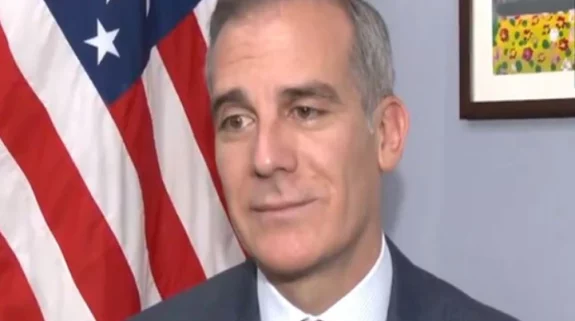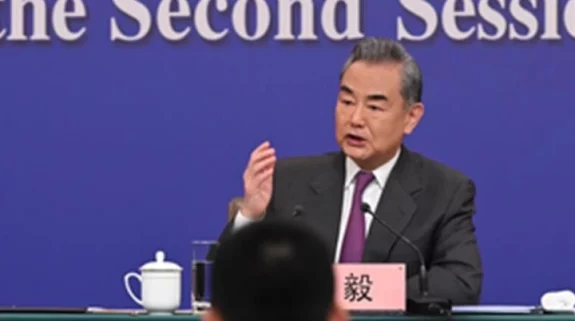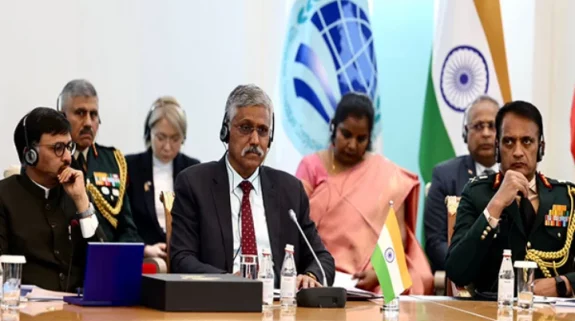India has mounted a stunning riposte to lower its carbon footprint fast-tracking New Delhi’s ambitious renewable-energy Paris Climate goals.
“Little noticed in the West, India is undergoing a green-energy revolution—exceeding targets, breaking records, and quickly making the age of cheap clean energy a reality,” applauds the <a href="https://foreignpolicy.com/2020/10/22/green-india-energy-climate/#:~:text=Today%2C%20India%20looks%20likely%20to,far%20surpassing%20its%20Paris%20target.&text=And%20Modi%20has%20further%20raised,renewable%20energy%20capacity%20by%202030.">Foreign Policy magazine</a> of the United States in a piece on India’s stunning “green turnaround”.
The article points out that India’s focused effort to switch towards cheap green energy has permeated India’s rural heartland. India has made solar panels and battery storage cheaper, reaching nearly 100 million rural homes. Many major private players like Tata Power with Rockefeller, HCL Foundation, etc aims to connect with villages connecting about ten million households.
India’s solar power tariff is among the lowest in the world, the article notes, making the abruption of renewable energy easier. Consequently, India is at the cusp of an age of truly competitive, unsubsidized clean energy. When the price of solar panels and batteries falls another 50 percent, as is likely during the next three years, market forces will take over, and Indian consumers will take the clean-energy mantle from the government—something that still looks quite a way off in most developed countries. In the end, India’s solar tariff may cost less than two rupees per unit in 2021.
The article points out that if current trends continue India will surpass emission targets that have been fixed under the Paris climate accord.
It notes that India’s pledge to increase the share of power-generation capacity that doesn’t use fossil fuels to 40 percent by 2030; today, generation capacity from renewable, hydroelectric, and nuclear sources already reaches 38 percent, putting India on track to comfortably exceed its target. The other commitment is to reduce carbon emissions by 33 to 35 percent (from 2005 levels) by 2030. “Today, India looks likely to reduce emissions by as much as 45 percent by 2030, far surpassing its Paris target.”
India has set its own ambitious renewable-energy goals—and is exceeding even them. Its fossil-fuel power-generation capacity is presently about 230 gigawatts (GW), of which 205 GW come from coal. When, in 2015, Prime Minister Narendra Modi announced plans to build 175 GW of new renewable energy capacity by 2022, the announcement was met with skepticism. After all, India at the time only had a renewable generating capacity of 34 GW.
<blockquote class="twitter-tweet">
<p dir="ltr" lang="en">Inaugurating RE-Invest 2020. Watch my speech. <a href="https://t.co/IxPyr6p157">https://t.co/IxPyr6p157</a></p>
— Narendra Modi (@narendramodi) <a href="https://twitter.com/narendramodi/status/1331940584890613760?ref_src=twsrc%5Etfw">November 26, 2020</a></blockquote>
<script async src="https://platform.twitter.com/widgets.js" charset="utf-8"></script>
But India has already installed 89 GW of renewable power capacity and will achieve Modi’s 175 GW target as planned.
An upbeat Indian Prime Minister further raised the stakes: At the September 2019 United Nations Climate Action Summit, he announced a new target of 450 GW of renewable energy capacity by 2030.
Going forward India will launch the National Hydrogen Energy Mission, elevating India’s renewable energy bid to an altogether new level, Modi said last month at the third renewable energy investors meet last. Under the program, the government will drive grid-scale storage solutions, and provide feedstock for ammonia production..



















